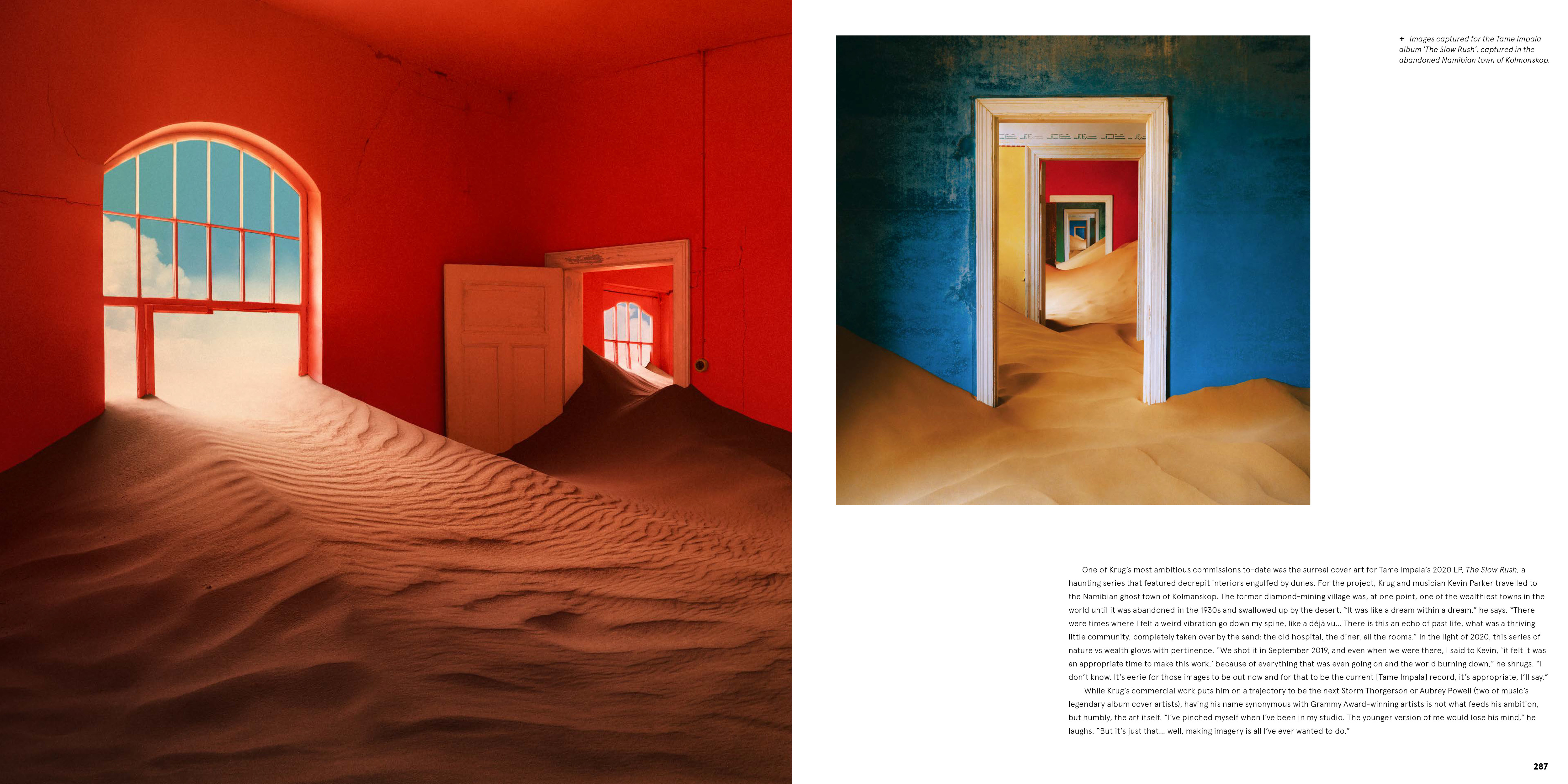
Type7 Volume 2, 2020 (coffee table book, a collaboration with Porsche, as contributor and copy editor)
“It’s not always what you choose. It’s what chooses you.” These are the wise words of Neil Krug’s father that have seemingly permeated his career. While the Kansas-bred, Los Angeles-based photographer’s name might not ring a bell, chances are you have seen his treacle-y, cinematic work before. Perhaps it was on the album sleeve of a Tame Impala, Bonobo or Lana Del Rey record; a campaign, press shot or editorial featuring Bat For Lashes, A$AP Rocky or Unknown Mortal Orchestra; or maybe you caught his luminescent sci-fi-like tour visuals for The Weeknd. But for most of his working life, Krug has acted as the ocular communicator for some of music’s most intriguing artists.
“I was always dreaming of imagery,” he muses. “There was just never a time in my life when that wasn’t the case. Maybe image-making is a form of escapism for me, but there has always been a gravitational pull.” Krug has been experimenting with visual ideas since his early teens. “I just started playing around with video and photography. Mostly with horrible results,” he laughs. “But by the time I was in my early 20s. It felt like something had arrived. I didn’t even know what it was, and I still don’t.”
In 2010, a pinnacle time for imagery on the internet – think Tumblr, Flickr and the birth of Instagram – Krug created Pulp Art Book. Part monograph, part art tome, it had all the sartorial accoutrements of a sultry B-grade film. When Krug, now in his 30s, mentions one of his biggest influences is Chilean-French auteur and psychotropic cinema icon, Alejandro Jodorowsky (particularly his masterpiece, El Topo), the penny drops. Like forgotten memories found in an attic, Krug’s early works were creamy, sunbleached and intimate, speaking to culture’s obsession with low-fi photography at the time. As cult internet fame is wont to do, these heady works eventually caught the attention of creatives seeking an enchanting eye to realise their visions.
“I’ve always responded to things that were larger than life,” he says. Many of Krug’s works are indeed born within the subconscious. His chaotic and apocalyptic, “phantom imagery”, for example, which sees a group of women crowded around a volcano, came from a reoccurring dream. “I kept having these weird, dark dreams about that,” he says. “Like there was a heaviness in the air.” These works are some of the photographer’s favourites. “They’re the hardest stuff technically for me to pull off, but I love the challenge of making those images.” In contrast, Krug’s radiant and otherworldly landscapes are what he does “when no one is watching.”
“That’s the work that’s challenging and comforting for me to make because I love the fact that it has nothing to do with anyone,” he says. “It’s just complete abstract expression. This is me at my most simple and basic. It’s a way for me to go out to locations at different times of the day, test ideas and see what comes back. But it’s also a place where there is such a deep reservoir of emotions and ideas that come out of that kind of work.”
One of Krug’s most ambitious commissions to-date was the surreal cover art for Tame Impala’s 2020 LP, The Slow Rush, a haunting series that featured decrepit interiors engulfed by dunes. For the project, Krug and musician Kevin Parker travelled to the Namibian ghost town of Kolmanskop. The former diamond-mining village was, at one point, one of the wealthiest towns in the world until it was abandoned in the 1930s and swallowed up by the desert. “It was like a dream within a dream,” he says. “There were times where I felt a weird vibration go down my spine, like a déjà vu... There is this an echo of past life, what was a thriving little community, completely taken over by the sand: the old hospital, the diner, all the rooms.” In the light of 2020, this series of nature vs wealth glows with pertinence. “We shot it in September 2019, and even when we were there, I said to Kevin, ‘it felt it was an appropriate time to make this work,’ because of everything that was even going on and the world burning down,” he shrugs. “I don’t know. It’s eerie for those images to be out now and for that to be the current [Tame Impala] record, it’s appropriate, I’ll say.”
While Krug’s commercial work puts him on a trajectory to be the next Storm Thorgerson or Aubrey Powell (two of music’s legendary album cover artists), having his name synonymous with Grammy Award-winning artists is not what feeds his ambition, but humbly, the art itself. “I’ve pinched myself when I’ve been in my studio. The younger version of me would lose his mind,” he laughs. “But it’s just that... well, making imagery is all I’ve ever wanted to do.”
neilkrug.com


